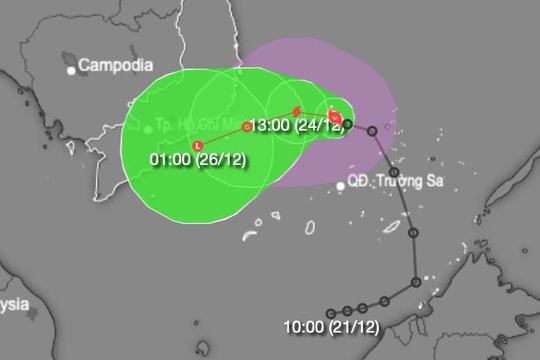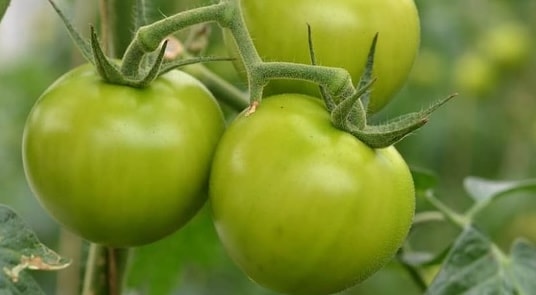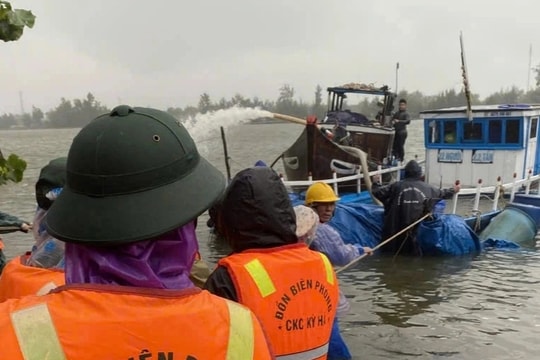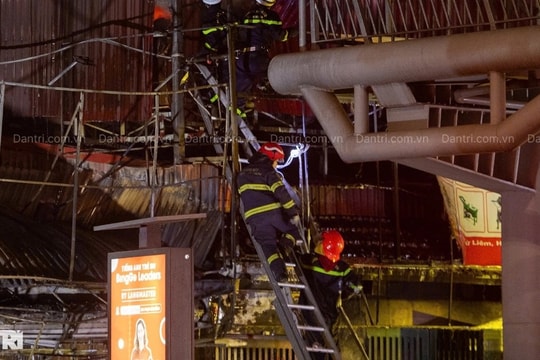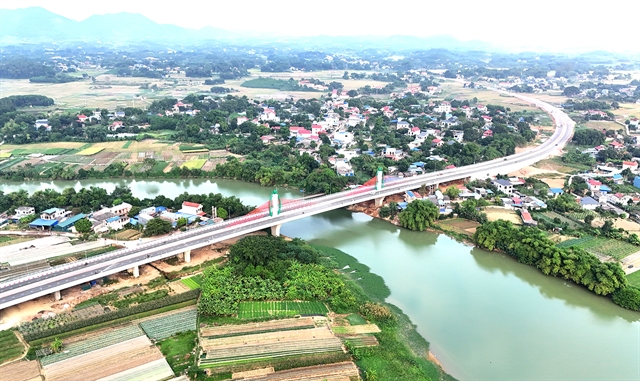 |
| An aerial view of Thái Nguyên City in the northern province of Thái Nguyên. — VNA/VNS Photo Hoàng Nguyên |
HÀ NỘI — The northern midlands and mountainous region is aiming to lead the way in terms of green development.
The region has set an urgent goal that by 2030, it will have a higher average income and by 2045, it will be a model of green development for the whole country.
It is focusing resources on developing a modern joined-up infrastructure system, connecting regions, inter-regions and also internationally.
It wants to implement forceful solutions to strengthen the business environment and attract foreign-direct investment (FDI) enterprises, putting those as top priorities to lead comprehensive socio-economic changes.
The region has a particularly important strategic position in terms of politics, economics, culture, society, environment, defence, security and foreign affairs.
It is rich in resources, minerals, agriculture, forestry and benefits from being a border trade economy.
Promoting transport
To create a breakthrough, in the past two years, the Government and provinces in the region have pushed up investment in transport infrastructure.
Dozens of large transportation projects, connecting up the region and to other areas, are being simultaneously constructed.
The Tuyên Quang-Hà Giang expressway project, which has been underway since the start of the year, has a length of nearly 105km, two lanes, a total investment of VNĐ10 trillion (US$392.8 million).
The project will form an economic corridor from Hà Nội and the Hồng (Red) River Delta to the northern mountainous provinces.
For the expressway through Hà Giang Province, over a length of more than 27km, with a total investment of VNĐ3 trillion ($117.6 million), Deputy Chairwoman of the provincial People's Committee Hà Thị Minh Hạnh said that this was the first time the province acted as an investor with such a large capital sum and over such a large land mass.
Thus, the province had the highest incentive to complete the project on schedule.
For the section passing Tuyên Quang Province, which is 77km long, Director of the provincial Management Board of Construction and Transport Projects Nguyễn Thiện Tuyên said that the province wanted to handover key units this year.
Forty per cent of the project would be finished by the end of this year and the entire project would be completed next year as per schedule.
Having a highway has been the aspiration of Cao Bằng Province for many generations.
Immediately after the groundbreaking ceremony of the Đồng Đăng (Lạng Sơn)-Trà Lĩnh (Cao Bằng) Expressway on January 1 this year, the province started a campaign for site clearance for the project.
Hoàng Xuân Ánh, Chairman of the provincial People's Committee, said that in 100 days, districts handed over and signed commitments to hand over more than 99 per cent of the highway construction site, even though they had not yet received land clearance compensation.
To date, the province had given 41.26 km out of 41.35 km of road to construction contractors, 99.78 per cent of the total road length.
Improving investment
Recently, economic growth rate in the region has average levels compared to the whole country, exceeding its own set target.
In the period 2021-23, the growth rate reached 7.65 per cent per year, while nationally it was 5.19 per cent.
Gross regional domestic product (GRDP) per capita also increased significantly, from VNĐ52.8 million ($2,000) per person in 2020 to VNĐ64.8 million ($2,500) per person last year.
Some localities have higher growth rates, making positive contributions to the country's overall gross domestic product (GDP), playing a leading role in the region such as Bắc Giang, Thái Nguyên, Lào Cai and Phú Thọ.
Many administrative procedures, especially those related to businesses and investment, have been simplified, significantly shortening processing time.
In addition, provinces have put a focus on building joined-up infrastructure systems, prioritising key transport routes, creating new development space for industry, services and industrial zones.
Last year, Bắc Giang Province attracted more than $3.2 billion in inward investment, an increase of 3.2 times compared to 2022 and is the highest investment ever attracted.
The province's GRDP growth rate reached 14.14 per cent, the highest in the country, putting it in seventh position in the national table in terms of attracting FDI.
Innovated production thinking
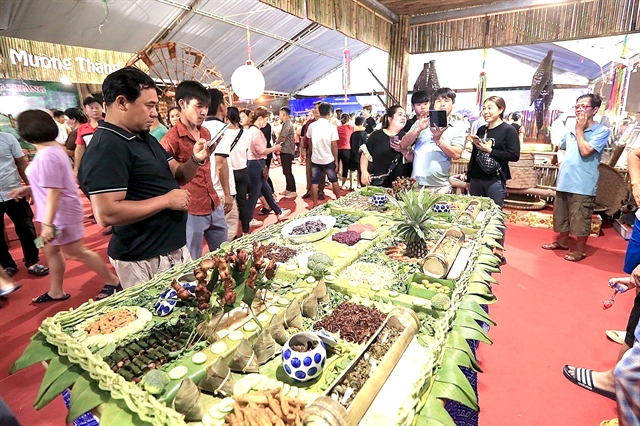 |
| Tourists attend an agricultural product festival in Hòa Bình Province. — VNA/VNS Photo Trọng Đạt |
Sơn La Province has more than 83,000ha of fruit trees, nearly 88,000ha of industrial crops with 28 agricultural products granted protection certificates and 280 organic agricultural and aquatic food supply chains.
Director of the provincial Department of Agriculture and Rural Development Hà Như Huệ said that last year, the value of processed agricultural products for export in the province was $159.33 million, an increase of 6.42 per cent over the same period of 2022.
From 2021-23 and the first five months this year, Sơn La Province attracted investment in 11 large-scale agricultural projects, of which seven had been granted new investment policies.
Sơn La is also the leading province in the north in terms of fruit trees output with high competitive brands in domestic and international markets.
The province has 17 factories and 543 agricultural product processing facilities to improve the value of agricultural products.
To build Sơn La into a fruit processing centre of the region, Chairman of the provincial People's Committee Hoàng Quốc Khánh said that the province attracted investment to expand raw material and agricultural product processing areas.
It had created favourable conditions for investors through projects on production, processing and consumption of agricultural products.
The province had sent to the Prime Minister a project to build Sơn La into a high-tech agricultural zone. In addition, the province invested in transportation infrastructure to promote the processing industry, especially with key routes such as the Hòa Bình-Mộc Châu Expressway and the route to the Nà Sản Airport.
Tourism
Realising resolutions on preserving cultural values, Hà Giang Province has issued many policies to comprehensively support community tourism.
Currently, the province has invested in 16 cultural tourism villages to preserve traditional house styles and to revive traditional folk songs, dances and crafts.
The province established 188 commune-level folk artisan associations with nearly 9,000 members to teach traditional culture to the younger generation.
Triệu Thị Tình, Deputy Director of the provincial Department of Culture, Sports and Tourism, said: "Tourism activities in Hà Giang are exploited all year round, in which the main and consistent product is indigenous cultural values of 19 ethnic groups associated with cultural villages."
Last year, the province welcomed more than three million tourists, an increase of more than 750,000.
Revenue from tourism reached more than VNĐ7 trillion ($274.7 million), an increase of VNĐ2.5 trillion ($98 million) compared to 2022.
Hà Giang was announced as Asia's leading emerging destination of the year last year by the World Travel Awards. — VNS









